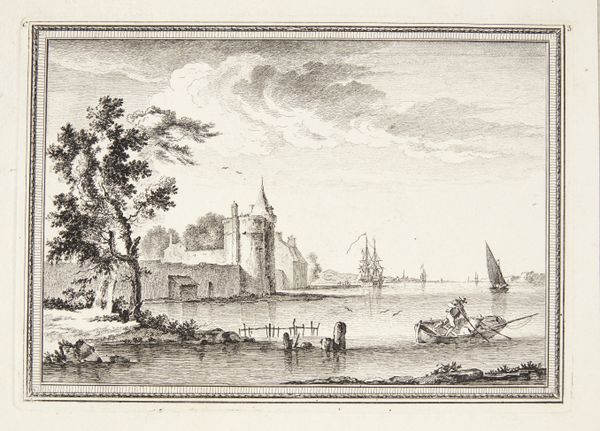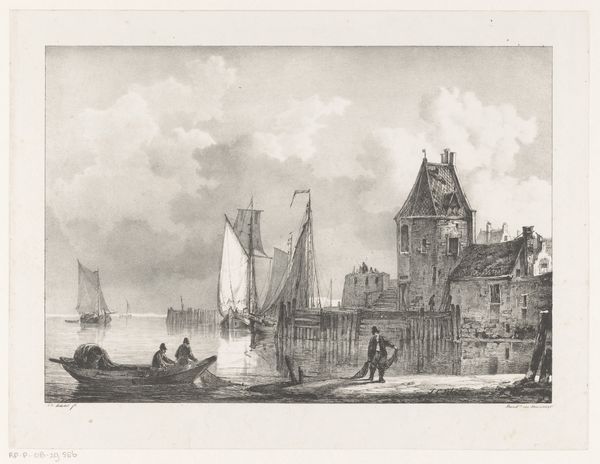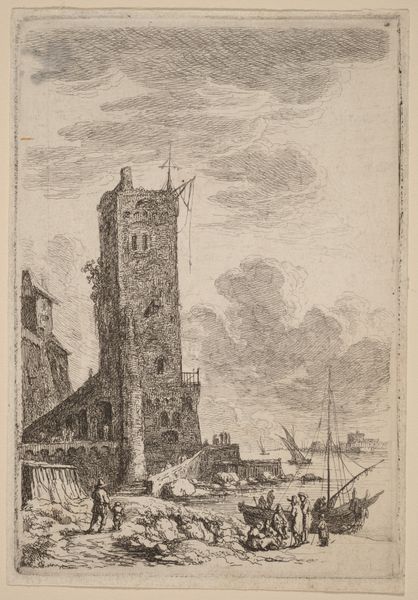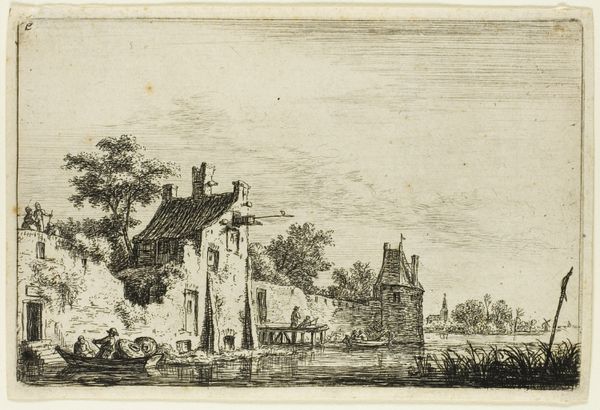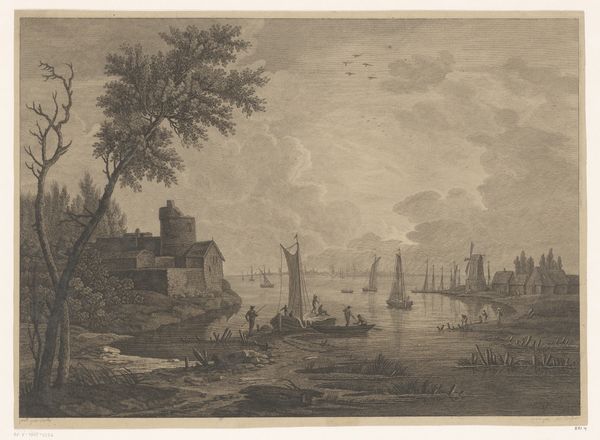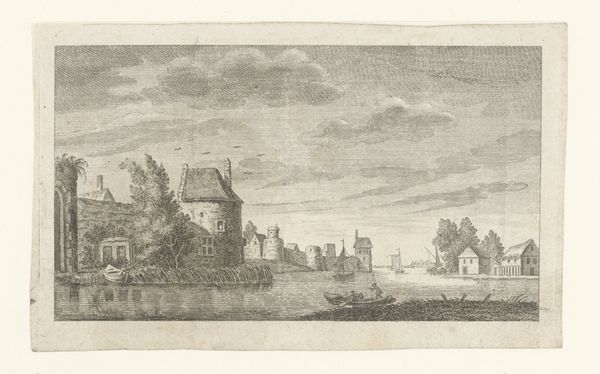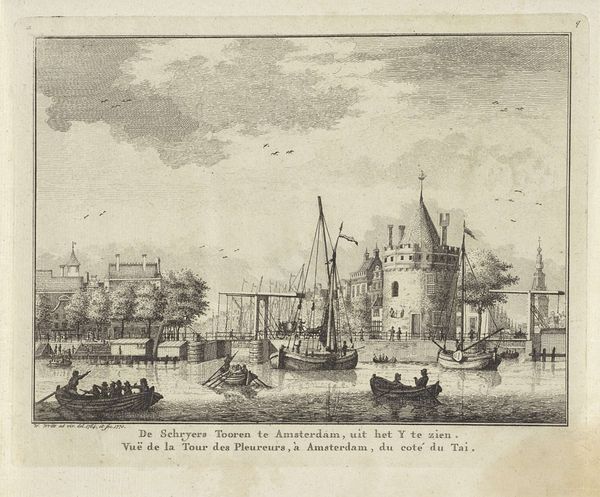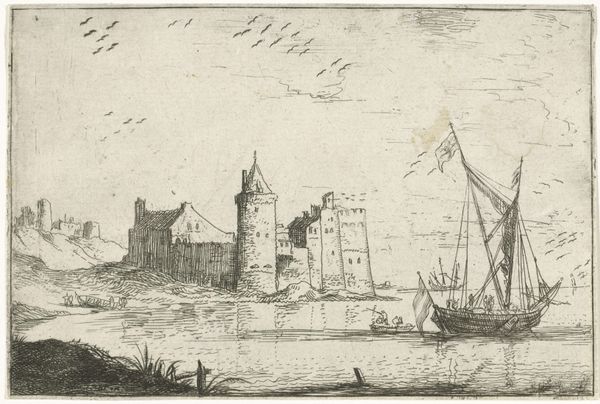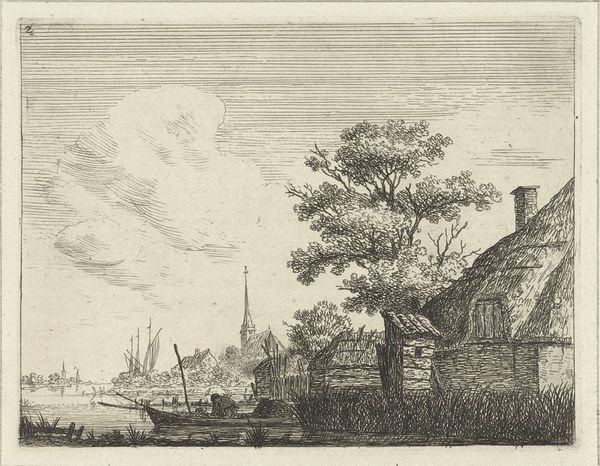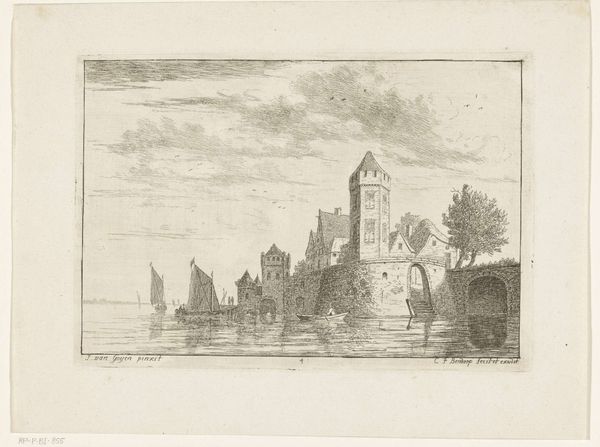
print, etching, engraving
# print
#
etching
#
landscape
#
cityscape
#
genre-painting
#
engraving
Copyright: National Gallery of Art: CC0 1.0
Curator: This is "Houses on an Inlet," a print created by Franz Edmund Weirotter using etching and engraving. The artwork showcases a cityscape blended with a genre scene, seemingly capturing a moment of everyday life by the water. What's your first impression? Editor: I'm struck by the sheer industriousness hinted at in the image. The buildings, the boats – it all points to a working port, a site of intense labor and production. The etching feels almost like a blueprint, documenting not just a pretty view, but a space of commerce. Curator: Absolutely. Weirotter doesn't idealize this place; there's a sense of gritty realism in how the details are rendered. But how do you interpret that in light of class? Who exactly is being represented by "everyday life" here? Consider also the rise of maritime power at the time... Editor: Well, look at the composition. The foreground is filled with what appears to be discarded materials, almost waste – remnants from construction or boat repair perhaps. This grounds us in the material reality of the location and, potentially, the unseen hands behind it. It emphasizes a system where resources and waste coexist, both integral to productivity. Curator: And what of the architecture itself? Its aged appearance contrasts with the implied movement of the ships in the background. Do these solid structures embody existing power structures? Editor: I would argue so. The houses look established, maybe even imposing in their age and scale relative to the people who may inhabit them and to the water. The tower and the high walls suggest exclusivity and ownership. Etching and engraving allowed for mass reproduction. How many other cities resembled the means of production represented here? Curator: Good question! Consider also the social context of viewing such an image. Who were the consumers of these kinds of prints, and what narratives were being reinforced or challenged? Editor: This piece is very effective as a landscape, yet Weirotter is very intentional about documenting industry itself – labor, and class. What looks quaint to the eye likely entailed very complicated economics for those living in and working in this city at the water's edge. Curator: I think focusing on labor and capital shifts our attention in fruitful ways. The role of waterways in trade networks can tell a story beyond what meets the eye. Editor: Precisely. It makes you think about the movement of goods and the backs that carry them, reminding us that landscape art can carry political weight.
Comments
No comments
Be the first to comment and join the conversation on the ultimate creative platform.

